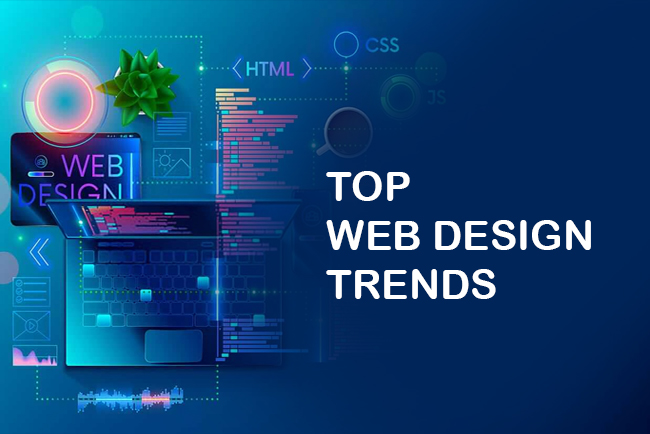10 Game-Changing Web Design Trends You Can’t Ignore in 2024!

Introduction
Hey there, business champions! Are you ready to rock your brand’s online presence in 2024? If your website’s looking stale and uninspired, you’re not alone. In a world where attention spans are shorter than a TikTok video, having an eye-catching web design is critical. Today, we’ll dive into 10 game-changing web design trends that you can’t ignore if you want to keep your brand vibrant and engaging!
- Minimalism Is Here to Stay
What is Minimalist Design?
Ah, the beauty of less! Minimalist design strips away the fluff to focus on the essentials. Think clean lines, ample white space, and a straightforward layout. The goal? To guide your visitors seamlessly through your content without overwhelming them.
Benefits of Minimalism in Web Design
Not only does minimalism look chic, but it also enhances the user experience. Users can quickly find what they need without distractions. Plus, you load faster—say goodbye to bouncing visitors! You’ll create a smoother journey, making it more likely they’ll convert into loyal customers.
- Dark Mode Design
Why Dark Mode Matters
Ah, the allure of dark mode. It’s not just a trend; it’s a way to provide a more comfortable viewing experience, especially in low-light environments. Plus, it can add an air of sophistication to your brand.
Implementing Dark Mode Effectively
Want to hop on the dark mode bandwagon? Ensure your color palette is balanced. Use contrasting text colors for readability and don’t forget to maintain your brand identity—dark doesn’t mean drab!
- Voice User Interface (VUI)
Rise of Voice Search
Let’s face it: we’re all talking to our devices now more than ever. Voice search continues to rise, and it’s reshaping how we interact with websites. Not only is it convenient, but it also fosters a more personal connection with your brand.
Designing for VUI: Best Practices
To get ahead, ensure your website supports voice commands. Use natural language and create concise content that aligns with how people speak. Optimize your site for voice searches to boost visibility in this new landscape.
- Inclusive and Accessible Design
Importance of Accessibility
Web accessibility is not just a buzzword; it’s a necessity. We’re all unique, and ensuring everyone can enjoy your site is vital. Think about how your online space can cater to differently-abled users, elderly folks, and everyone in between.
Key Elements of Inclusive Design
Use clear fonts, descriptive alt texts, and allow for keyboard navigation. Don’t just focus on aesthetics—make your website a welcoming environment for all.
- Micro-Interactions
What Are Micro-Interactions?
Ever clicked a button and saw a little animation? That’s a micro-interaction! These small, subtle animations can lead to a more engaging user experience. They involve feedback loops that keep your users informed and entertained.
Examples of Effective Micro-Interactions
Think of notification signals or loading animations. They keep users in the loop and add a touch of delight to the overall experience. Implement these features strategically—they’re subtle but effective!
- 3D Elements and Animations
Adding Depth to Your Designs
Time to pump up the volume! Incorporating 3D elements in web design can pull visitors in and create a more immersive experience. They give depth to an otherwise two-dimensional web interface.
Tools for Implementing 3D Elements
Want to bring your designs to life? Tools like Blender or Three.js can help you create stunning 3D visuals. Remember, balance is key—overdoing it can distract from your core message!
- Bold Typography
The Power of Text in Web Design
When it comes to web design, typography is a game-changer. Using bold and expressive fonts can convey your brand’s personality. It’s like the outfit you wear; it says a lot about who you are!
Choosing the Right Fonts
Opt for fonts that reflect your brand while maintaining readability. Don’t shy away from contrasting sizes and styles to grab attention. The right typeface can transform your site from blah to brilliant!
- Sustainable and Eco-Friendly Design
The Shift Towards Sustainability
As awareness around sustainability rises, so too does the expectation for eco-friendly websites. This is about more than looking good; it’s about doing good. Clients are drawn to brands that show care for the planet.
How to Create Eco-Friendly Websites
Consider reducing your site’s energy consumption through efficient coding. Choose green hosting providers and minimize heavy graphics. A user-friendly, eco-conscious design can set you apart in 2024!
- Data-Driven Design
Utilizing Analytics for Better Design
Why rely on guesswork when you can use data to inform decisions? Data-driven design is all about using insights from your audience’s behaviour to refine and enhance your website.
A/B Testing and Iterative Design
Don’t just launch and leave it. Use A/B testing to see what works best for your audience. Small iterative changes, based on feedback and analytics, can lead to substantial improvements in user experience.
- Personalization and User Experience
The Importance of Customization
In a world where everyone craves uniqueness, personalization is key. Tailoring user experiences based on preferences can enhance engagement and retention.
Techniques for Personalized User Experience
Employ algorithms to display relevant content or products based on user behaviour. Use surveys or quizzes to gather insights and provide customized solutions. The more relevant your site is to individual users, the more likely they are to convert!
As Bharath Gupta, CEO of Pixl, puts it: “A website is more than just a digital presence—it’s a tool to drive meaningful growth. At Pixl, we create designs that combine creativity with functionality to help brands thrive.”
Let Pixl bring these trends to life and transform your digital journey!